|
|
 |
|
082804-A deeper look into the art of the Romans |
|
written
by eatonj / 08.31.2004 |
|
|
| |
Itinerary |
| |
| |
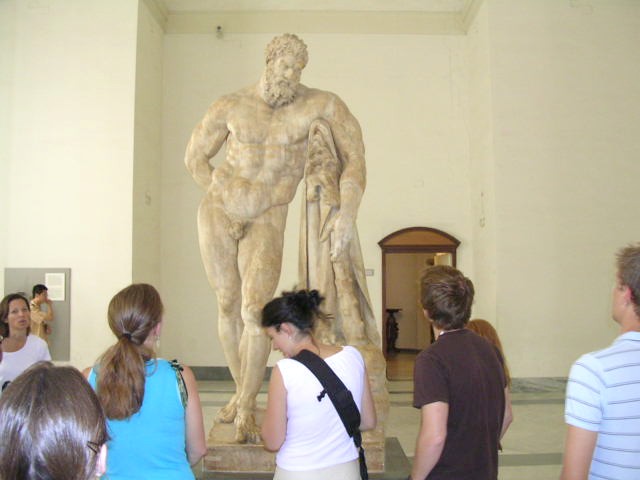
|
| Photo taken by Jeff Eaton |
| Ancient Statue of Hercules |
| Students admire an ancient statue of the Farnese Hercules at the Naples Archaeological Museum while Lisa discusses what we can glean about history and purpose of the statue from its artistic characteristics. |
| |
|
| |
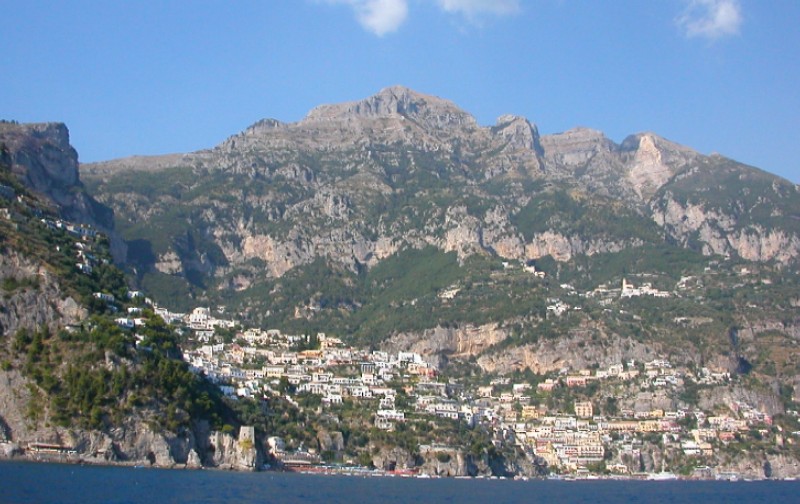
|
| Photo taken by Jeff Eaton |
| A first view of Positano |
| Here is our first glimpse of beautiful Positano from the ferry. We knew now that we were in for a great weekend. |
| |
|
This morning we woke up from a generally restful sleep at Hotel Sansevero in the historical district of Naples to find for many of us cold showers with poor water pressure. However, we quickly forgot this with a fantastic (and complimentary) breakfast of Italian pastries, which I found had striking resemblances to French pastries, and cappuccinos. By 9:00 we were eagerly awaiting the opening of the Naples Archaeological Museum, where most of remaining artifacts that were removed from Pompeii are housed. Lisa showed us a few of her favorite pieces, including some incredible marble statues and some of the rare remaining examples of bronze statuary, and we heard Amanda's presentation on the role of women in Roman society. Also housed in the museum is a fine collection Roman pottery and glass. I was most struck by the variety of colors in the glasswork.
After the museum we were officially set loose from class for the weekend, but as we love being together so much (note that we are still in week one…) the large majority of us traveled to the small beach town of Positano on the Amalfi Coast for a bit of rest, relaxation, and rejuvenation. As soon as we arrived in Positano, some by train and bus, others by train and ferry, we knew it was the perfect place to enjoy a weekend. It is a tourist town built up the side of the mountain around a ravine running in from the sea, with our hostel located a half hour walk (or significantly shorter bus ride) up the side of the mountain.
|
| |
|
| |
|
| |
Highlights |
| |
| |
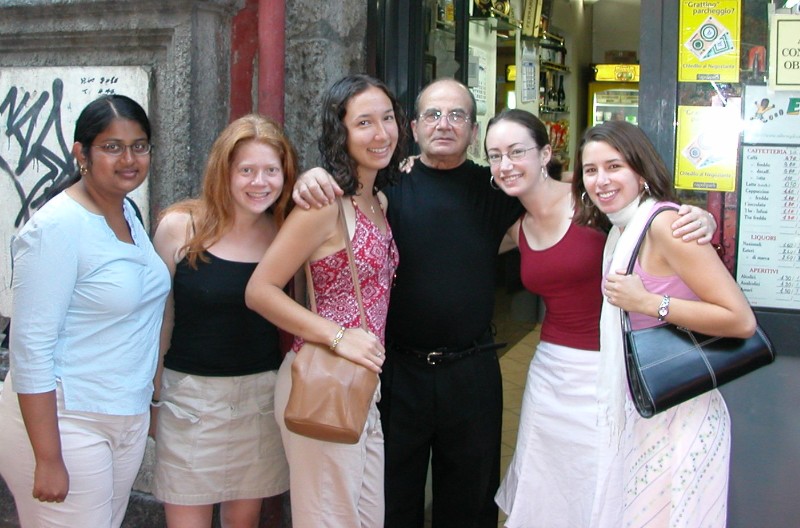
|
| Photo taken by Jeff Eaton |
| Grateful for a Fantastic Breakfast |
| UW students pose for a picture with the owner of the cafe next to the hotel where we ate breakfast in Naples. |
| |
|
| |

|
| Photo taken by Jeff Eaton |
| The Role of Women |
| Amanda displays an ancient Roman statue while explaining the how such a women would have appeared in society. |
| |
|
| |
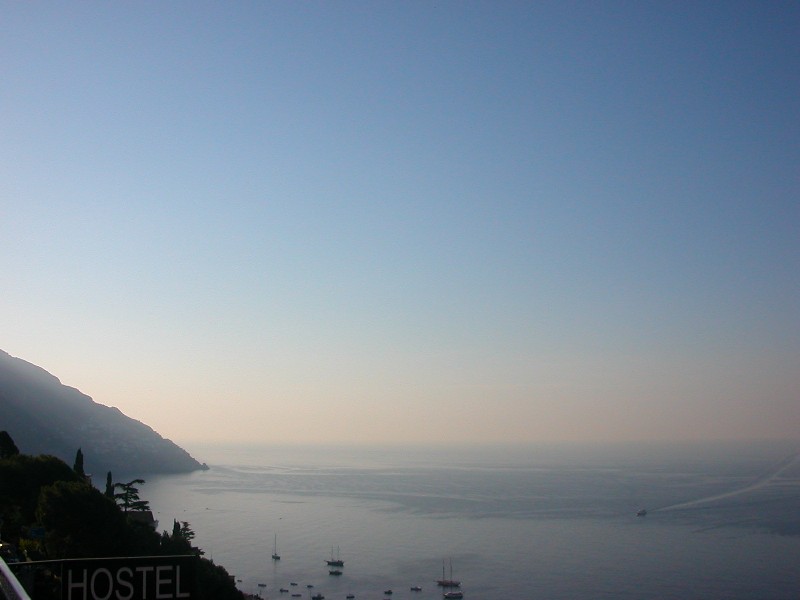
|
| Photo taken by Jeff Eaton |
| Positano Sunrise |
| A beatiful picture of the sea taken from the balcony of our hostel early Sunday morning. |
| |
|
The first highlight of the day was Breakfast at the cafe next to the hotel. We sat at small tables on the sidewalk and were served Italian pastries and Cappuccinos by a delightful Italian man singing Frank Sinatra tunes to himself (what better way to wake up?). The same man, whom I am guessing owns the cafe, had helped us find our way around Naples the day before, advised us to take good care of our bags, and, in very good English, warned a few of the gentlemen in our ranks to be sure to "take good care of our women" in Naples. The pastries were fresh and delectable. My personal favorite was a croissant with filling of a cheese (unfortunately I'm not yet enough of an expert on Italian cheeses to know the name of the cheese) and small chunks of peaches. (I've been since been informed that the cheese in the pastry is "riccotta")
Another highlight was Amanda's presentation on the role of women in Roman society. She was very knowledgeable in the subject and conveyed well the powers that Roman women held, the high moral standards to which they were expected to lead their lives, and the development and importance of female goddesses in Roman culture. Also, to accompany her presentation, she chose a few pieces of Roman artwork on display in the museum which exemplified depictions of women in Roman society, mainly focused around piety and modesty.
The final highlight of the day was of course arriving in Positano. The town, although packed with both Italian and international vacationers, was absolutely gorgeous, and the water, a turquoise color I had only seen in movies was crystal clear. Our hostel, halfway up the hill provided gorgeous views of all of this from it's balconies and some beautiful sunrise pictures Sunday morning. The day Sunday we spent the day on the beach, reading "Italy and its Discontents" by Paul Ginsborg (sociology class). I’m sure it was somewhat amusing to walk by a row of beach chairs and see maybe ten people all reading the same book. Don’t worry though, we were able to fit in ample time for gelato, swimming in the crystal clear sea water, and of course a bit of tanning…aka burning.
|
| |
|
| |
|
| |
Images |
| |
| |

|
| Photo taken by Jeff Eaton |
| Figure 1-Muses |
| UW Honors ladies pose with the ancient Roman muses. |
| |
|
| |
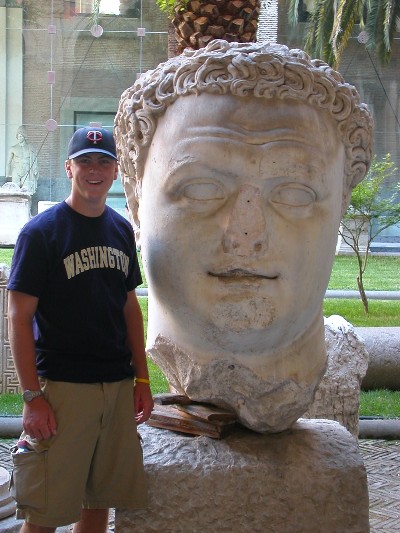
|
| Photo taken by Jeff Eaton |
| Figure 2: Shane and the Roman Head |
| Shane poses next to the head of a Roman statue to give an idea of the magnitude of the piece. |
| |
|
| |

|
| Photo taken by Jeff Eaton |
| Figure 3-Julia on the evening beach |
| Julia walks along the beach in the evening looking for bits of glazed terracotta for Lisa |
| |
|
| |

|
| Photo taken by Jeff Eaton |
| Figure 4-Positano Beach |
| An aerial view of the crowded main beach in Positano. The beach where we actaully spent the day was a bit more secluded beach next to this one. |
| |
|
Figure 1: Depicted here are the ladies of the Honors Rome Study Abroad with bronze statues of five of the ancient muses. To the Greeks and Romans the muses were goddesses who presided over the arts and sciences and inspired those who excel at these pursuits. They are supposed to be daughters of Jupiter (or Zeus). The statues are part of the Naples Museum's collection of ancient bronze statues, which were plentiful during Roman times (over 3000 stood in the various fora in Rome alone), but are rare now as most were melted down for new works. Most interesting about the bronze statues are the eyes. Instead of being painted on like in the marble statues, they were inlaid, and thus still remain today, giving the otherwise black statues a bit of an eerie presence.
Figure 2: Shane poses next to the head of a Roman statue...imagine how big the body must have been. Such colossal works were common in Roman society where bigger was better. Furthermore at one point the statue would have been painted in brilliant color. The statue stands in a nice outdoor are in the center of the Naples Museum where such partial remains of statues, as well as columns, sarcophagi, and other relics can be found amongst trees and plants.
Figure 3: Student Julia Mattson walks along the beach in Positano looking for bits of glazed terracotta with a gorgeous view of a dusky sea in the background. The sought bits of terracotta are remains of pottery that has been smashed and washed ashore and seem to be especially plentiful along the rocky beaches of Positano. While art history professor Lisa Schultz was not able to make the trip to Positano with us she requested that we bring these bits back for her collection of such items.
Figure 4: The crowded beaches of Positano provided a relaxing day for us and hundreds of other vacationers. For five euro we rented beach chairs for the day and kicked back for a bit of reading, tanning, and sleeping intermingled with swims in the crystal clear sea, pizza and gelato, and shopping trips into town, including the Diesel store where one can buy a pair of designer Diesel jeans for only 160 euro!
|
| |
|
| |
|
|
 |
|
